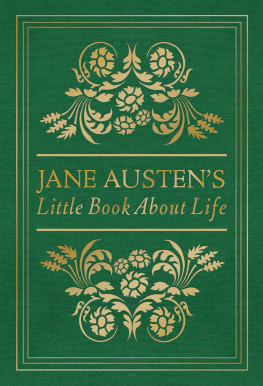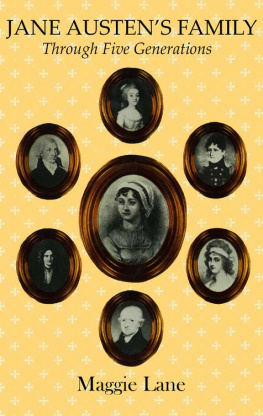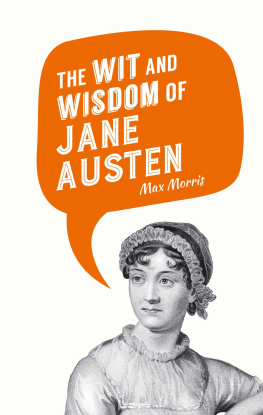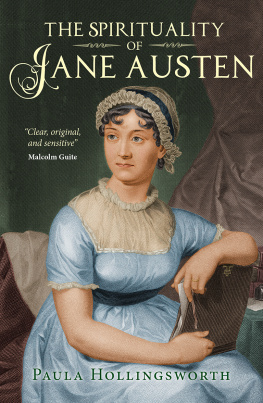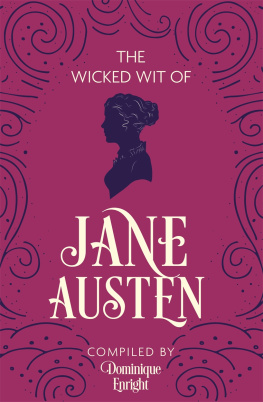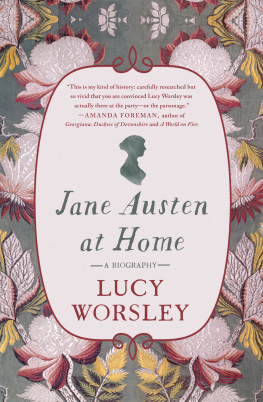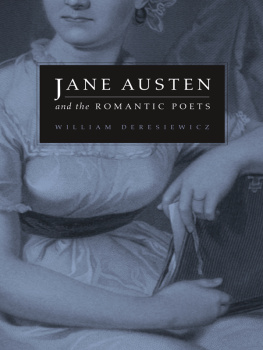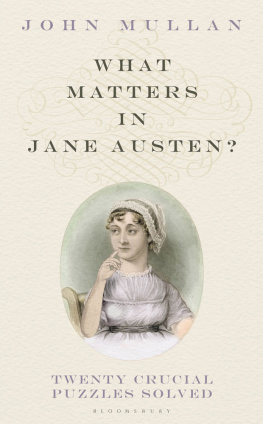
Jane Austens
Transatlantic Sister
Jane Austens
Transatlantic Sister
The Life and Letters of Fanny Palmer Austen

SHEILA JOHNSON KINDRED
McGill-Queens University Press
Montreal & Kingston London Chicago
McGill-Queens University Press 2017
ISBN 978-0-7735-5131-2 (cloth)
ISBN 978-0-7735-5208-1 (ePDF)
ISBN 978-0-7735-5209-8 (ePUB)
Legal deposit third quarter 2017
Bibliothque nationale du Qubec
Printed in Canada on acid-free paper
McGill-Queens University Press acknowledges the support of the Canada Council for the Arts for our publishing program. We also acknowledge the financial support of the Government of Canada through the Canada Book Fund for our publishing activities.
Library and Archives Canada Cataloguing in Publication
Kindred, Sheila Johnson, 1943, author
Jane Austens transatlantic sister : the life and letters of Fanny Palmer Austen / Sheila Johnson Kindred.
Includes bibliographical references and index.
Issued in print and electronic formats.
ISBN 978-0-7735-5131-2 (hardcover).ISBN 978-0-7735-5208-1 (ePDF).ISBN 978-0-7735-5209-8 (ePUB)
1. Austen, Fanny, 17901814. 2. Austen, Fanny, 17901814Correspondence. 3. Great Britain. Royal NavyMilitary lifeHistory18th century. 4. Great Britain. Royal NavyHistory18th century. 5. Great BritainHistory, Naval18th century. 6. Officers spousesGreat BritainCorrespondence. 7. Officers spousesGreat BritainBiography. 8. Officers spousesGreat BritainSocial conditions18th century. 9. Austen, Jane, 17751817Family. 10. Austen, Charles. I. Title.
V737.K56 2017 | 940.27341092 | C2017-903712-9 C2017-903713-7 |
This book is for Hugh
Contents
Illustrations
Preface
JUST OVER TWO HUNDRED YEARS AGO a young naval wife spent an anxious summer during 1810 in Halifax, Nova Scotia. It was the later years of the Napoleonic Wars. Her husband had been suddenly called away on a mission to transport troops to a war zone off the coast of Portugal. During the months that followed she waited for his return with growing trepidation until she finally welcomed back to port her beloved Charles. The genteel young woman was the beautiful, Bermuda-born Fanny Palmer Austen; her husband was Captain Charles John Austen, a naval officer, then serving on the North American Station of the British navy, and the youngest brother of the novelist Jane Austen.
This vignette, derived from Fanny Austens own letters, has turned out to be an inspiration for me. Since 2005 I had been writing extensively about Charles Austens career in North American waters, about the excitement of his first command and his pursuit of naval prize, but I had not paid much attention to his falling in love and marrying Fanny Palmer. More recently I became intrigued by the evidence that Fanny Austen had spent parts of two years in the place which I call home Halifax. I wanted to find out about her personality and character, as well as about the kind of life she led in Halifax and elsewhere. There was much to explore, beginning with her formative years in St Georges, Bermuda, through her naval travels with Charles in North America to her later years in England when she came to know the other members of the Austen family. This book presents what I have learned about Fanny Palmer Austen in all the ordinary and extraordinary aspects of her short life and exciting times.
My investigations began with Fannys letters, which have proved to be a treasure trove of personal narrative and contemporary detail. As a result of extensive original research, I have been able to present the letters in the social and cultural context of Fannys life. The picture of a lively, resourceful, and articulate young woman has emerged. I discovered a wife intimately involved with her husbands naval career and a new and significant member of the Austen family.
The narrative of Fannys life that I have been able to uncover is particularly instructive of what it was like to be a young woman living at sea with her husband and small children in early nineteenth-century wartime. Naval historian N.A.M. Rodger has observed that unfortunately there has been virtually no research undertaken into what one might call the female half of the naval community as a whole They represent an enormous void of ignorance, and our knowledge of the social history of the Navy will never be complete until someone fills it (Command of the Ocean, 2004). Despite Rodgers plea, little has since been published about wives who had immediate experience of their husbands professional careers and naval society. Fanny Austens letters, along with the story that surrounds them, provide a unique insight into female life in the theatres of naval warfare on both sides of the Atlantic during this tumultuous time.
Through her marriage to Charles, Fanny became closely connected with other members of his family. In particular, Fanny developed a relationship with Jane that excited my attention. Their sisterly association gave me grounds to investigate whether Fannys experiences may have influenced Jane Austen in the writing of her fiction. Because Fanny was both with Charles on the North American Station of the British navy (180711) and then with him and their children aboard HMS Namur stationed off Sheerness, Kent (181214), she had a truly transatlantic experience within his naval world that she could impart to Jane. Hence the title of this book, Jane Austens Transatlantic Sister.
Other artefacts in addition to Fannys letters became important sources for my research. The discovery of Fannys small, red morocco leather pocket diary for 1814 was an exciting find. Entries identifying her domestic needs, noting the existence of books to be bound, laundry sent out, coaches hired, and treats of cake and tea acquired, personalize the profile of a young mother trying to run her household with care and economy. Additionally, a fine oil painting executed by British artist Robert Field in Halifax in 1810 gives a strong impression of Fanny. Her red-gold hair and clear blue eyes are striking; her gaze is direct and her mood reflective. The painting invites conjecture about her character and her emotions.
As I liked the idea of allowing Fanny to recount her own story, the full texts of her letters are placed within the main body of the book. I have added two important but hitherto unpublished letters about her, written in 1808, by her sister Esther and her husband Charles (). The endnotes also add significant details to the context of Fannys letters. They identify important individuals and locations, and provide brief explanations of naval and other unfamiliar references, in addition to citing sources of information. The notes and the extensive bibliography are intended to enrich an appreciation of Fanny Austens life, yet the style of writing will allow a general reader to enjoy the book without consulting these materials.
I was fortunate to obtain numerous illustrations, some rarely seen, that connect Fanny to the places and people she knew. These contemporary nineteenth-century images illuminate her life in Bermuda, Nova Scotia, and England. Of special interest are several items from private collections: the wonderful portraits by Robert Field of Fanny and Charles, a sketch by Cassandra and a handsome watercolour of Halifax town and harbour by Charless nephew, Herbert Grey Austen, a naval officer of the next generation.
As I write this in the 200th anniversary year of Jane Austens death, there is a noticeable resurgence of interest in her novels, in fact in all things Austen. My study of the life and letters of Fanny Austen adds to our knowledge of the Austen family and of Janes fiction. Fannys time in England coincided with the years of Jane Austens most productive period, which were highlighted by the publication of
Next page


